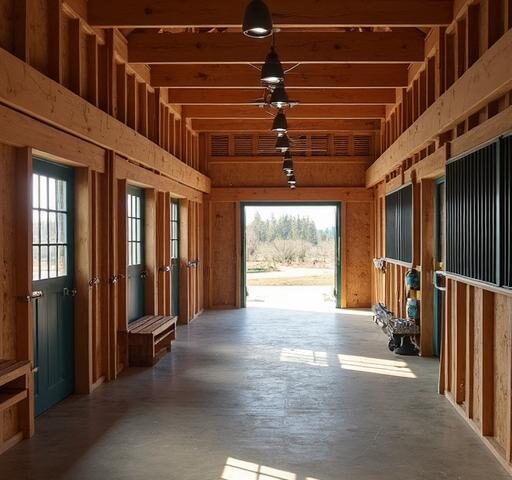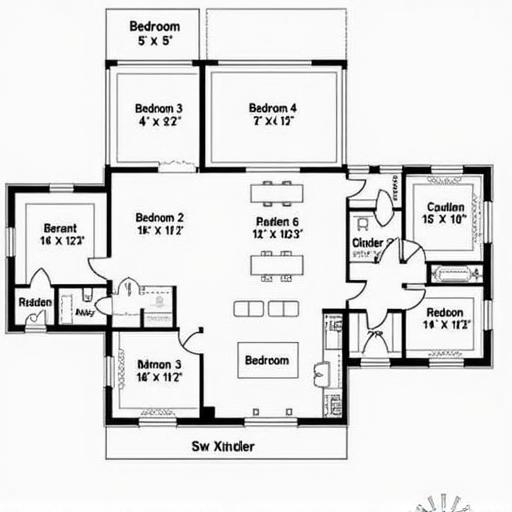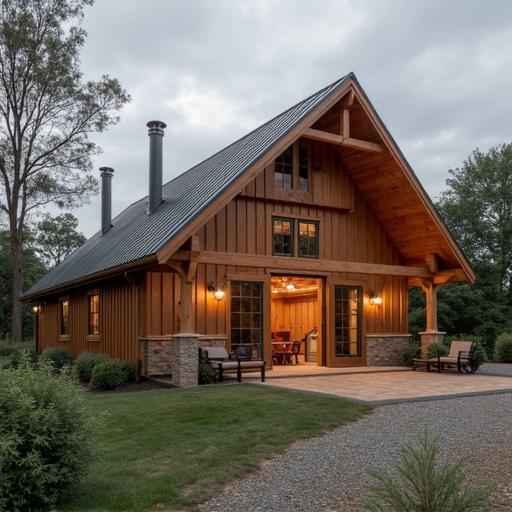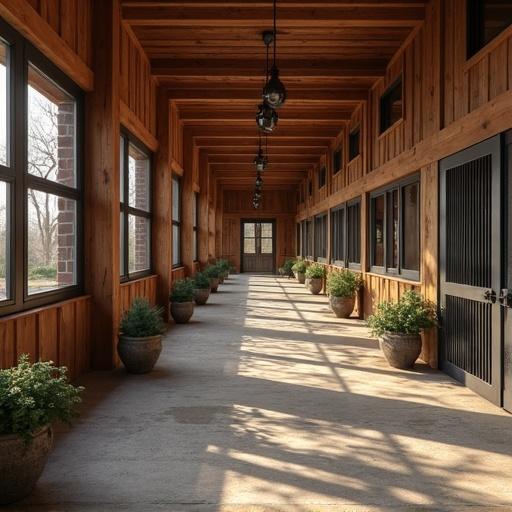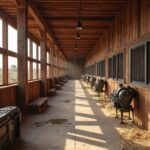
Barndominium Phoenix AZ: Discover Your Dream Home Today
September 9, 2025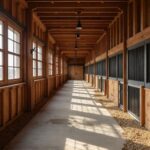
Barndominium Photos: Stunning Designs You’ll Love
September 9, 2025In recent years, the cost of barndominium living has captured the attention of many prospective homeowners seeking a unique blend of comfort and charm. A barndominium, which fuses traditional barn architecture with modern amenities, typically offers an appealing alternative to conventional residential properties. This innovative housing solution is rising in popularity across the United States, as it combines aesthetic appeal with functional living spaces that cater to those looking for both style and practicality.
Barndominiums originated as a way to repurpose old barns into livable areas, but their versatility allows them to be built from scratch as well. Homeowners appreciate the open floor plans and spacious interiors that can serve various purposes-from cozy family homes to expansive entertainment venues. The rustic appearance coupled with contemporary features has made barndominiums particularly appealing for those who value both craftsmanship and modern conveniences.
As interest continues to grow, it’s essential for potential buyers to understand the different factors influencing the cost of barndominiums. From location and land prices to building materials and labor costs, each element plays a significant role in determining the total investment required. Moreover, understanding these cost factors will help discerning homeowners assess whether this alternative housing option aligns with their financial goals while offering a lifestyle that complements their values and needs.
Understanding the Cost Factors of Barndominiums
Barndominiums have surged in popularity as an innovative housing solution, designed to merge the rustic charm of barn-style architecture with the comforts and functionality of modern living. However, potential buyers or builders need to navigate various cost factors before diving into this unique venture. Understanding these elements can significantly influence overall investment decisions and determine whether a barndominium aligns with one’s financial goals.
Land Costs
One primary factor influencing the cost of a barndominium is the expense associated with land acquisition. The price of land can vary drastically depending on location, size, and local market conditions.
In rural areas where space is more abundant, buyers often find that they can secure significant parcels at lower prices compared to urban environments where demand drives costs higher. This disparity may make barndominiums particularly appealing for those looking for affordable alternatives while still enjoying wide-open spaces and picturesque landscapes.
Moreover, prospective owners should also consider additional expenses related to land preparation. This includes grading, clearing vegetation, installing utilities such as water and electricity, and ensuring proper drainage systems are in place. These underlying costs can quickly add up and should be carefully evaluated during the planning process to develop a realistic budget for constructing a barndominium.
Materials and Construction Labor
The materials used in building a barndominium contribute significantly to its total cost. Steel structures tend to be popular due to their durability and low maintenance needs but may demand a higher upfront investment than traditional wood framing. Additionally, insulation is vital in ensuring energy efficiency; selecting high-quality insulation materials will play an essential role in both comfort levels within the home and the eventual energy savings over time.
Labor costs vary based on location as well as project scope. While some enthusiasts opt for DIY projects to save money, hiring professional contractors ensures that building codes are met and results consistently align with quality standards. Homeowners must account for labor fees when budgeting since skilled tradespeople such as electricians, plumbers, and general contractors might charge premium rates depending on local conditions.
Permits and Design Elements
Navigating local zoning laws and obtaining building permits can also introduce additional expenses often overlooked in initial budgets. Barndominiums sometimes fall under unique categories that require specialized approvals; understanding local regulations surrounding unconventional builds is crucial for avoiding potential delays or fines.
Design elements play a pivotal role in shaping both aesthetic appeal and overall functionality inside a barndominium but can impact costs considerably as well. From open-concept layouts that incorporate spacious gathering areas to bespoke features like large windows allowing natural light, every design choice affects not just immediate costs but future livability too. Prospective owners should approach design choices mindfully-balancing desires against practicality amidst considerations about their budget related explicitly to the cost of barndominium ownership.
Cost of Barndominium
Building or purchasing a barndominium requires an initial investment that can vary widely compared to traditional homes. The typical starting price for a barndominium is generally lower than conventional houses, ranging from $100 to $200 per square foot, depending on the design and materials used.
This affordability attracts many prospective homeowners looking for innovative ways to maximize their living space without breaking the bank. However, the total cost of barndominium ownership must also account for factors like land acquisition, utilities installation, and necessary permits which can fluctuate based on location and local regulations.
The long-term savings associated with barndominiums often make them a more appealing option in the long run. Because many of these structures are designed with energy efficiency in mind, homeowners can benefit from reduced energy bills over time.
Features such as high-quality insulation, metal roofing, and smart HVAC systems contribute significantly to lowering utility costs. Additionally, maintenance expenses tend to be lower due to durable materials typically utilized in barndominium construction-often resulting in less frequent repairs compared to traditional homes made with wood framing.
When considering the overall cost of owning a barndominium versus more conventional housing options, it’s essential to weigh not just immediate expenditures but also potential future savings. For instance:
- Energy Efficiency: Barndominiums’ unique designs allow for better airflow and temperature regulation.
- Maintenance Costs: Typically lower than those of traditional homes due to weather-resistant exterior materials.
- Resale Value: These properties have been increasing in popularity; thus, their resale value may appreciate at a healthier rate than some conventional homes.
Given these factors, understanding both the upfront investment and long-term financial benefits is crucial for anyone contemplating entering the burgeoning world of barndominium living.
Financing Options for Barndominiums
For those considering the option of a barndominium as their next home, understanding the financing options available is crucial to making an informed decision. Unlike conventional homes, which often come with standardized mortgage lending routes, barndominiums can be viewed as unconventional properties by some lenders. This perception can lead to unique challenges and opportunities when securing financing. Prospective buyers should explore a variety of funding avenues, including traditional mortgages, personal loans, and specialized financing options designed for alternative dwellings.
One common route for financing a barndominium is through traditional construction loans or mortgages that cater to existing structures and new constructions alike. These loans typically require a down payment ranging from 5% to 20%-an essential factor to consider when evaluating the overall cost of barndominium construction.
However, it’s important for buyers to ensure that their chosen lender understands the differences between traditional residential properties and barndominiums. A knowledgeable lender will have insight into the potential resale value and appeal of this growing housing trend.
| Financing Option | Key Features |
|---|---|
| Conventional Mortgage | Standard loan terms; requires substantial down payment (5%-20%). |
| Construction Loan | Short-term banking product; funds building costs directly; switch to permanent mortgage upon completion. |
| USDA Rural Development Loan | No down payment required; competitive interest rates; only available in eligible rural areas. |
| Personal Loan | A viable alternative if funds are needed sooner; may have higher interest rates compared to secured loans. |
Navigating these options can be overwhelming, but it’s vital for potential homeowners to conduct thorough research or consult with financial advisors who specialize in non-traditional housing sales. Understanding which option best aligns with one’s financial situation can not only facilitate the purchasing process but also set up future living arrangements that fit comfortably within budget constraints while still offering the charm of a barn-style residence.

Budgeting for Customization and Upgrades
When considering a barndominium, one of the defining aspects that can significantly influence the overall cost is customization and upgrades. Many prospective owners are drawn to barndominiums because of their flexibility in design, allowing them to create a space that feels uniquely theirs. However, it’s essential to approach customization with a clear budgeting strategy, as choices can quickly escalate the initial investment needed.
There are several popular customization options that homeowners often consider when building or renovating their barndominium:
- Interior Finishes: Upgrading materials such as countertops, flooring, and cabinetry can add both aesthetic appeal and utility. High-quality finishes like granite or hardwood may boost your immediate satisfaction but also impact your budget.
- Layouts and Room Configurations: Altering the layout to fit personal preferences-such as adding an office space or creating an open-concept living area-can lead to increased construction costs due to additional structural requirements.
- Energy-Efficient Features: Investing in energy-efficient appliances, insulation, and windows might have higher upfront costs but can lead to significant long-term savings on utilities.
It’s crucial for homeowners to carefully weigh these decisions against their overall financial plan. While the cost of a barndominium may start at a lower price point than traditional homes, every upgrade makes it increasingly important to track expenses accurately.
Setting aside a portion of your budget specifically for potential upgrades not only allows for flexibility in selecting personalized features but also helps avoid financial strain later down the road. Proper planning ensures you won’t be surprised by sudden costs associated with customization choices, helping you maintain control over your project and enjoy your new living space fully tailored to meet your lifestyle needs.
Location and Land Costs Impact
Geographical Influences on Barndominium Costs
When it comes to the cost of barndominium construction, the geographical location plays a crucial role in determining both land prices and overall expenses. For instance, rural areas typically offer more affordable land options compared to urban centers where space is at a premium.
Many prospective buyers find that choosing a location outside busy metropolitan regions can significantly reduce their initial costs while providing the spaciousness and privacy often associated with barndominiums. However, aspiring owners must also consider factors such as proximity to essential amenities, which can influence the long-term value of their investment.
Affordable Locations and Real Estate Markets
Certain regions across the United States have gained popularity among barndominium enthusiasts due to their lower real estate costs. States like Texas, Arkansas, and Mississippi offer vast expanses of land at competitive prices, making them ideal locations for building these unique structures.
Additionally, local zoning laws in these states tend to be more lenient regarding unconventional homes, allowing homeowners greater flexibility in design and construction methods. Buyers looking for a cost-effective option may want to research these areas further, as they might find not only affordable land but also desirable communities that support this modern living trend.
Land Development Considerations
Not only does the price of land vary based on location but so do development costs associated with preparing the site for a barndominium. Factors such as grading, utility connections (water, electricity, sewer), and access roads can add substantially to your total investment.
In remote areas where infrastructure may not be well-established, potential homeowners need to factor in additional expenses for bringing utilities up to their property. Thus, while selecting an affordable parcel of land seems attractive initially due to its lower price point, it’s vital to conduct thorough due diligence on all associated developmental costs before settling on any property for your future barndominium project.
Comparative Analysis
When comparing the cost of barndominiums to traditional homes, it’s essential to consider not only the initial purchase price but also the long-term financial implications and lifestyle benefits. Barndominiums typically come at a lower upfront investment than conventional homes, largely due to their unique construction method that blends residential living with agricultural design.
A standard barndominium can be built for anywhere from $100 to $200 per square foot, while traditional homes may cost upwards of $150 to $300 in similar markets. This significant price variance makes barndominiums an increasingly attractive option for new homeowners looking to maximize space without compromising on style.
In addition to the direct comparison of construction costs, it’s crucial to evaluate how different factors influence overall expenses over time. For instance, barndominiums often feature energy-efficient designs and materials that contribute to reduced utility bills.
While traditional homes may require more significant investments in insulation and sustainable technology, many barndominium owners report substantial savings in energy consumption due to their open floor plans and updated systems. Furthermore, these structures frequently involve lower maintenance costs because of their durable steel or metal exteriors compared to wood siding or other materials used in traditional houses.
| Category | Barndominium | Traditional Home |
|---|---|---|
| Construction Cost (per sq. ft.) | $100 – $200 | $150 – $300 |
| Average Utility Savings | 20-30% | N/A |
| Maintenance Costs | Lower | Higher due to exterior upkeep |
| Resale Value Potential | Strong market interest; attractive resale prices | Depends on location; can fluctuate significantly |
Overall, while both barndominiums and traditional homes offer distinct advantages, the cost of barndominium solutions provides a compelling argument for those seeking affordable dream living spaces without sacrificing quality or functionality. As buyers factor in long-term savings related to utilities and maintenance along with potentially higher resale values motivated by unique architectural appeal, many find that investing in a barndominium fits well within their financial goals and lifestyle aspirations.
Conclusion
As we’ve explored throughout this article, barndominiums offer a unique and financially appealing alternative to traditional homes. With their blend of rustic charm and modern functionality, these structures are becoming increasingly popular for those seeking affordable options in the housing market. The potential cost savings associated with energy efficiency and lower maintenance further enhance their allure, making them worthy of consideration for anyone looking to invest in a new home.
When weighing the decision to pursue a barndominium, it’s essential to assess your individual lifestyle needs and budget constraints. Understanding the various cost factors-including land acquisition, materials, labor, and desired customizations-will help you make a more informed choice. While the upfront investment may seem daunting compared to conventional homes, remember that many homeowners find themselves benefitting from long-term financial advantages as well as increased property value over time.
Ultimately, whether or not a barndominium is right for you will depend on your personal preferences and financial situation. By reflecting on what features are most important-such as style, amenities, and location-you can align your dreams with realities in relation to the cost of barndominium construction or purchase. As you consider your options, take heart that numerous financing avenues exist to support your journey toward this innovative living space that wonderfully marries practicality with aesthetic appeal.

